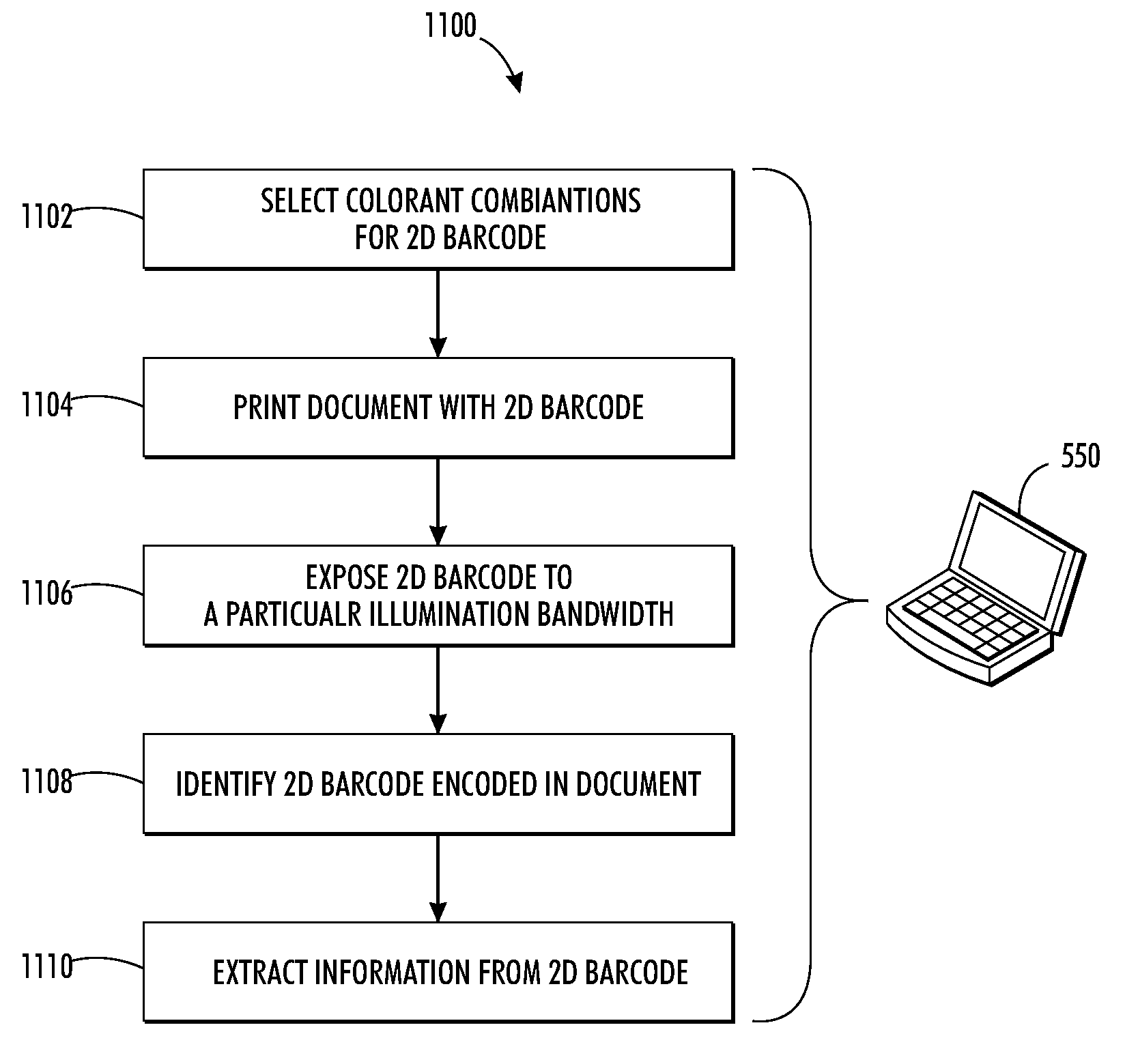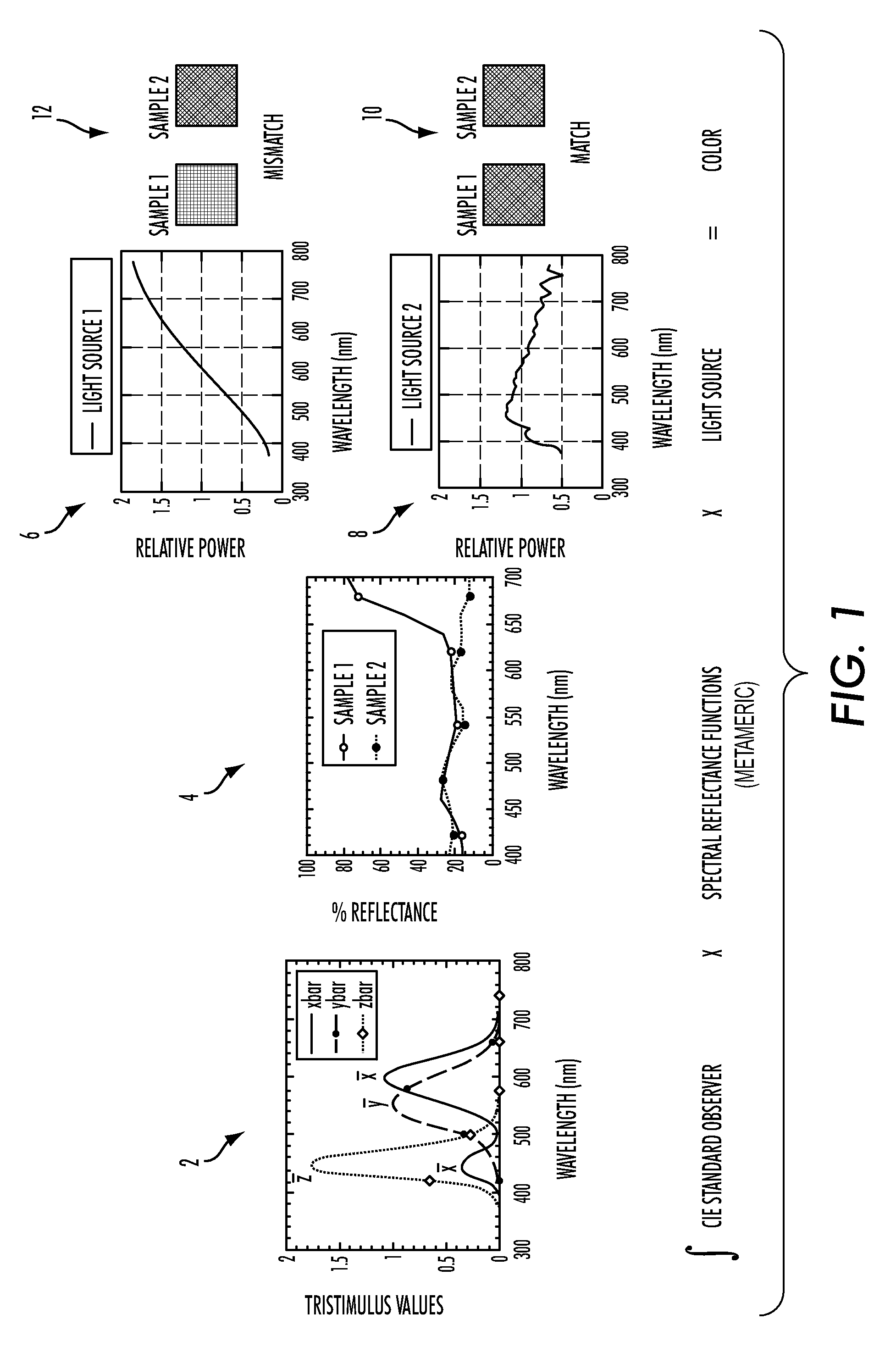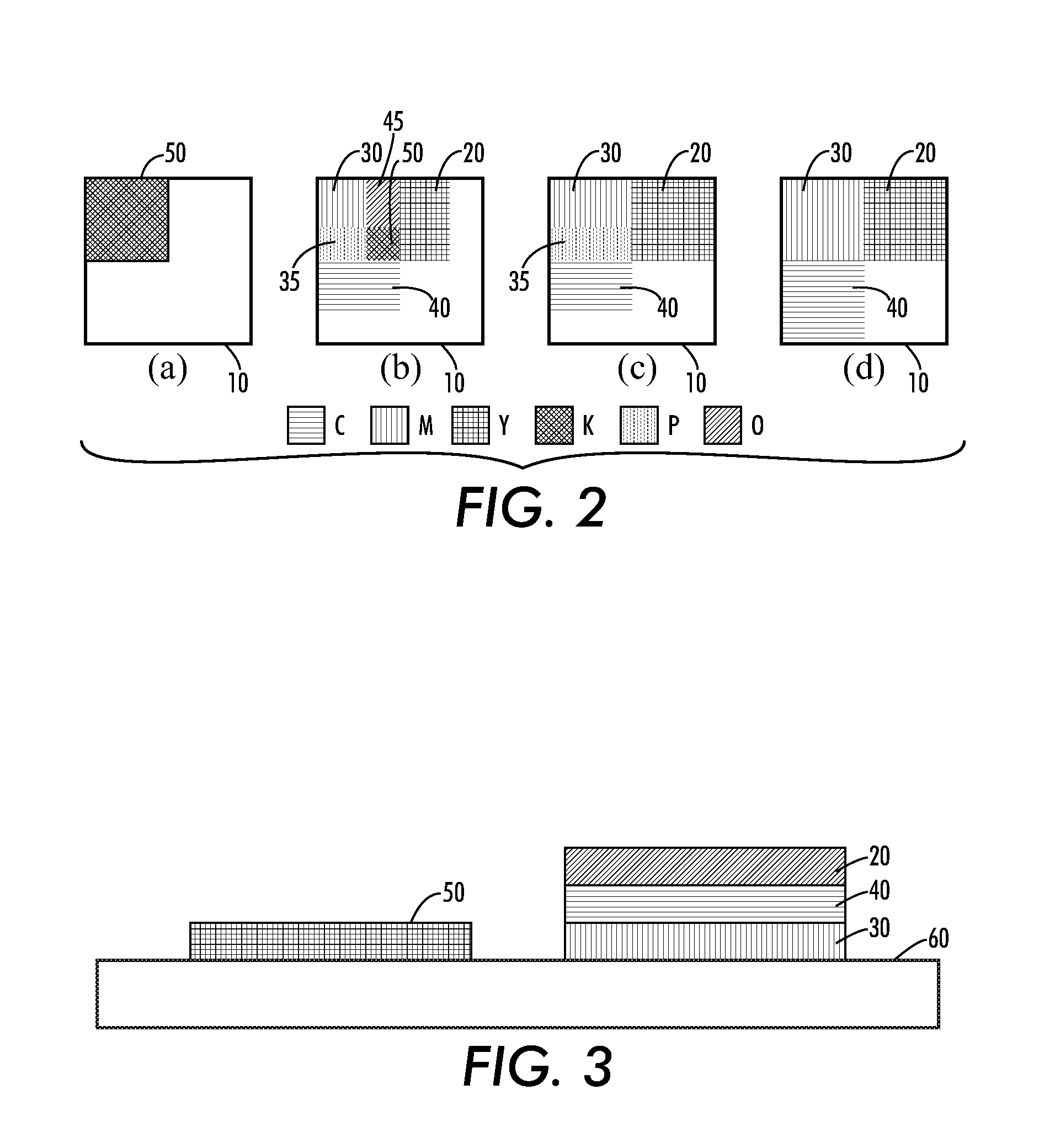Phase locked IR encoding for peened 2d barcodes
- Summary
- Abstract
- Description
- Claims
- Application Information
AI Technical Summary
Benefits of technology
Problems solved by technology
Method used
Image
Examples
Embodiment Construction
The term “data” refers herein to physical signals that indicate or include information. An “image,” as a pattern of physical light or a collection of data representing said physical light, may include characters, words, barcodes and text as well as other features such as graphics. A “digital image” is by extension an image represented by a collection of digital data. An image may be divided into “segments,” each of which is itself an image. A segment of an image may be of any size up to and including the whole image. The term “image object” or “object” as used herein is believed to be considered in the art generally equivalent to the term “segment” and will be employed herein interchangeably.
In a digital image composed of data representing physical light, each element of data may be called a “pixel”, which is common usage in the art and refers to a picture element. Each pixel has a location and value. Each pixel value is a bit in a “binary form” of an image, a gray scale value in a ...
PUM
 Login to View More
Login to View More Abstract
Description
Claims
Application Information
 Login to View More
Login to View More - R&D
- Intellectual Property
- Life Sciences
- Materials
- Tech Scout
- Unparalleled Data Quality
- Higher Quality Content
- 60% Fewer Hallucinations
Browse by: Latest US Patents, China's latest patents, Technical Efficacy Thesaurus, Application Domain, Technology Topic, Popular Technical Reports.
© 2025 PatSnap. All rights reserved.Legal|Privacy policy|Modern Slavery Act Transparency Statement|Sitemap|About US| Contact US: help@patsnap.com



